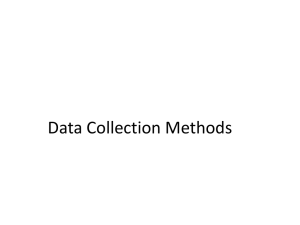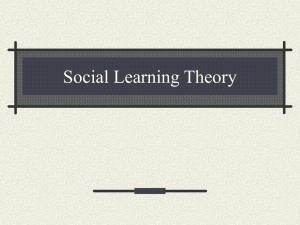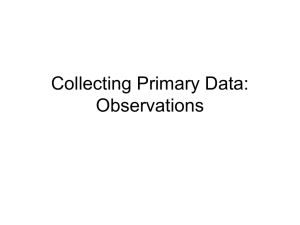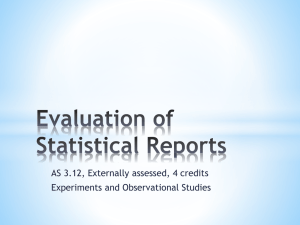Scrutinizing Data Collection Mehtods
advertisement
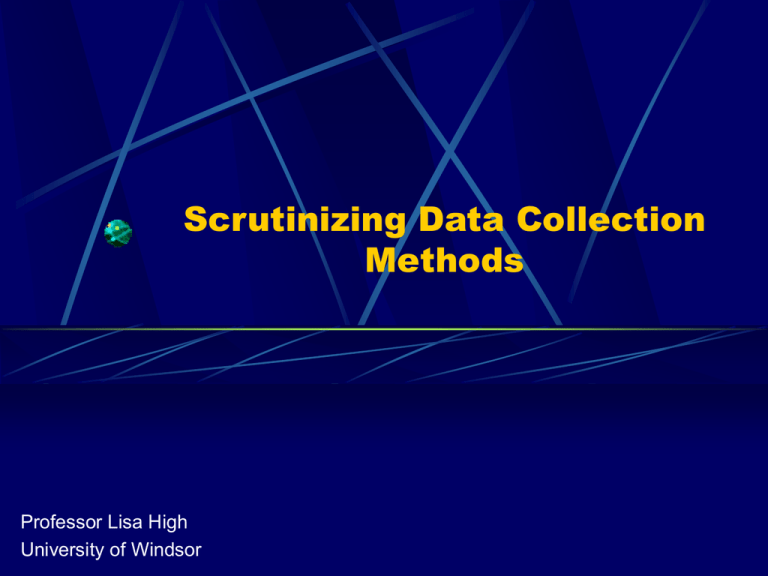
Scrutinizing Data Collection Methods Professor Lisa High University of Windsor Existing Data vs. New Data First data collection decision: - Use existing data - New data gathered - How will the researcher generate data? Methods of Collection Historical research Secondary analysis Records Data Collection Methods When existing data is not available Developing a data collection plan = 3 types of approaches used most frequently: Self-reports (2) Observation (3) Physiologic measures (1) Dimensions of Data Collection Methods Four Dimensions: (1) Structure (2) Quantifiability (3) Obtrusiveness (4) Objectivity Self-report Methods Direct questioning Unstructured Reports: - Completely unstructured interviews - Focused or semi-structured interviews - Focus group interviews - Life histories - Diaries Self-report Methods Structured self-report - formal means of collection – written document = instrument Instrument is the “interview schedule” or “questionnaire” ( face to face or telephone) QUESTION FORMS: (a) Closed-ended questions or fixed alternative - dichotomous, multiple choice, cafeteria, rank order and forced question (a) Open-ended questions Instrument Construction Outline of the instrument’s content Monitor for: wording, clarity, sensitivity of the respondent’s psychological state, freedom from bias, and reading level Draft instruments - Critically reviewed - Pre-test/pilot -tested Borrowed or adapted from other instruments Interviews vs. Questionnaires Questionnaires less costly - Interviews face-to-face interviews = good response rates Less time and effort to administer - Feasible for most people - Complete anonymity - Questions less likely to be misinterpreted - Absence of interviewer = no biases - can produce additional information through observation - Scales & special Forms of Structured Self-Reports Social-psychological scales - response bias (social desirability, extreme response, acquiescence response) - Counterbalancing? Vignettes Projective techniques Q-sorts Evaluation of Self-Report Methods Strengths: Behaviors can be observed Yields more information Most commonly used in nursing Weakness: Validity and accuracy Social desirability Unstructured = time consuming and demanding Critiquing Self-Reports What to look for: - Degree of structure - Interview or questions uses - Composite scale administered - How instruments administered - Response rate Observational Methods Alternative to self-reports Broad applicability Researcher flexibility to several dimensions: Focus of the observation (2) Concealment (3) Duration of observation (4) Method of recording observations (1) Unstructured Observational Methods Permits the researcher to see the world as the study participants To develop a rich understanding and appreciation of the phenomena Extract meaning form events and situations Grasp the subtleties of cultural variation What is participant observation? Gathering Unstructured Observational Data Consider the following: The physical setting – where questions (b) The participants – who questions (c) Activities – what questions (d) Frequency and duration – when questions (e) Process – how questions (f) Outcomes – why questions (a) Positioning Approaches (1) Single Positioning (2) Multiple Positioning (3) Mobile Positioning Recording Unstructured Observational Data Log Field notes Observational notes Theoretical notes Methodologic notes Personal notes Structured Observational Methods Differs from unstructured observational - - Advance preparation Accurate categorizing, recording and encoding the observation and sampling Checklist Rating scales Observational sampling includes: (a) Time sampling (b) Event sampling Evaluation of Observation Methods Have an intrinsic appeal to capture Suited for people who are unable to describe their own behaviors Provides in-depth and diverse information Humans are used as the measuring instruments Shortcomings – ethical difficulties, reactivity, observational bias Unstructured – yield richer data Biophysiologic Measures Use of biophysiologic and physical variables (1) (2) (3) (4) (5) Five classes: Basic biophysiologic processes Nursing actions = outcomes Evaluation of specific nursing procedures/interventions Evaluate & improve the measurement & recording of biophysiologic information Antecedents and consequences of biophysiologic indicators = possible treatment modes Types of Biophysiologic Measures Includes: “in vivo measures” or “in vitro measures” IN vivo measures – performed directly within or on living organisms IN vivo instruments – to measure all bodily functions and technological advances IN vitro measures – data gathered from participants extracting some biophysiological material from them In vitro measures – chemical, microbiologic, cytologic and histologic means Types of Biophysiologic Measures Evaluation of Biophysiologic Measures: - Accurate and precise Measures are objective Valid measures of the targeted variables Cost usually low or nonexistent Disadvantages: - measuring tool may affect the variable Normally interferences that create artifacts Energy must be applied – avoid damaging cells Critiquing Biophysiologic Measures Critiquing Biophysiologic Measures: - most important consideration – the appropriateness of the measures for the research question Review: - Box 11-4 – p. 293 – 1st edition - Box 13.5 – p. 308 – 2nd edition
